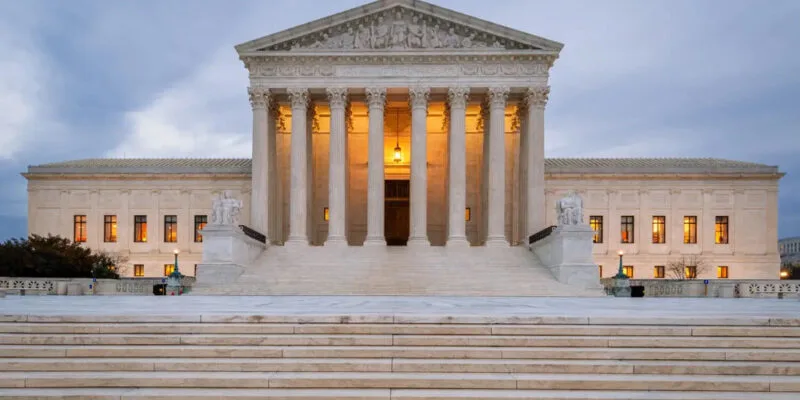The Great Western Buildings Lawsuit has become a focal point of considerable interest and scrutiny within legal circles, igniting widespread discussions and debates regarding fundamental issues such as property rights, construction standards, and legal accountability. This comprehensive exploration seeks to delve even deeper into the multifaceted complexities of the lawsuit, aiming to shed further light on its origins, the diverse array of parties involved, and the profound and far-reaching implications it carries for both the construction industry and property owners alike.
Origins and Background
The genesis of the Great Western Buildings Lawsuit can be traced back to allegations of substandard construction practices and contractual breaches attributed to Great Western Buildings, a well-established construction company with a history of commercial and residential projects. The lawsuit stems from claims that Great Western Buildings failed to meet industry standards and contractual obligations, resulting in structural deficiencies, safety hazards, and financial losses for property owners.
Parties Involved
The litigation involves a myriad of parties, including aggrieved property owners who contracted Great Western Buildings for construction projects, as well as subcontractors and suppliers associated with the implicated projects. Legal representatives representing both the plaintiffs and defendants play pivotal roles in presenting evidence, articulating arguments, and negotiating potential resolutions.
Allegations and Claims
Central to the lawsuit are assertions of defective construction, breach of contract, and negligence leveled against Great Western Buildings. Plaintiffs contend that the company deviated from accepted industry practices, leading to compromised structural integrity, safety concerns, and financial hardships for property owners. These allegations have prompted exhaustive examinations into Great Western Buildings’ construction methodologies, quality assurance protocols, and compliance with regulatory standards.
Implications for the Construction Industry
The repercussions of the Great Western Buildings Lawsuit reverberate throughout the construction sector, prompting introspection on matters of corporate accountability, regulatory oversight, and consumer protection. Construction firms face heightened scrutiny to uphold industry benchmarks, honor contractual commitments, and prioritize client welfare. Moreover, the lawsuit’s outcome may inform future legislative initiatives, industry regulations, and professional standards governing construction practices.
Legal Proceedings and Settlement Endeavors
Legal proceedings associated with the Great Western Buildings Lawsuit are characterized by intricate litigation strategies, encompassing pre-trial discovery, witness depositions, expert testimonies, and mediation or arbitration sessions. Plaintiffs seek restitution for damages incurred as a consequence of construction defects, while defendants endeavor to rebut allegations, mitigate liability, or pursue counterclaims where applicable. The ultimate resolution of the lawsuit may culminate in negotiated settlements, jury verdicts, or appellate adjudications.
Consumer Awareness and Advocacy
The Great Western Buildings Lawsuit underscores the imperative of consumer vigilance and advocacy in navigating construction-related transactions. Property owners are urged to exercise due diligence, solicit multiple bids, and meticulously review contractual agreements before engaging construction contractors. Furthermore, consumers retain the prerogative to assert their legal rights in instances of construction deficiencies, contractual breaches, or professional misconduct.
Navigating the Legal Landscape
Amidst the ongoing saga of the Great Western Buildings Lawsuit, legal professionals find themselves traversing a labyrinth of statutes, precedents, and case law. With a meticulous approach, attorneys representing both plaintiffs and defendants sift through mountains of evidence related to construction defects, financial losses, and contractual breaches. Their expertise allows them to navigate complex procedural obstacles and legal intricacies, as they craft compelling arguments to safeguard the interests of their respective clients. Plaintiffs’ lawyers painstakingly assemble evidence to substantiate claims, while defense attorneys scrutinize contractual agreements and counter with strategic arguments aimed at mitigating liability and preserving their clients’ reputations.

Standards and Oversight in the Construction Industry
The litigation casts a glaring spotlight on the construction industry’s adherence to regulatory standards and quality assurance protocols. Stakeholders spanning from developers and contractors to architects and engineers find themselves under heightened scrutiny, compelled to reevaluate their commitment to best practices, building codes compliance, and safety regulations adherence. Regulatory bodies tasked with overseeing construction activities face mounting pressure to bolster oversight mechanisms to prevent future lapses in construction quality and safety standards.
Financial Ramifications and Economic Fallout
Beyond the courtroom drama, the Great Western Buildings Lawsuit has far-reaching financial implications, impacting the bottom line of all involved parties and rippling across broader economic sectors. Plaintiffs seek restitution for monetary losses stemming from construction defects, property devaluation, and the costs associated with remediation efforts. Conversely, defendants face the specter of hefty legal fees, potential damage awards, and the looming threat of reputational harm. Moreover, the uncertainty stemming from ongoing litigation may deter investment in future construction projects, erode consumer confidence, and exert downward pressure on property values.
Community Perceptions and Social Impact
At the heart of the legal battle lies a broader discourse surrounding the integrity of local infrastructure, the reliability of construction contractors, and the well-being of affected communities. Public discourse surrounding the lawsuit touches upon themes of trust, accountability, and corporate responsibility, shaping the collective perception of industry practices and regulatory efficacy. Local government officials, civic organizations, and advocacy groups emerge as pivotal stakeholders, advocating for transparency, accountability, and equitable outcomes in construction-related disputes.
Reflecting on Lessons Learned and Charting a Path Forward
As the legal saga unfolds and the Great Western Buildings Lawsuit continues to captivate public attention, stakeholders find themselves at a crossroads, poised for introspection and reform. Key takeaways from the litigation underscore the paramount importance of upholding industry standards, fostering transparent communication, and prioritizing consumer welfare in all construction endeavors. Looking ahead, concerted efforts to strengthen regulatory oversight, enhance industry accountability, and promote ethical business practices will be essential to restoring public trust and ensuring the long-term integrity of the construction sector
Great Western Buildings Lawsuit: Conclusion
The Great Western Buildings Lawsuit serves as a poignant reminder of the complexities inherent in construction litigation and the imperative of upholding integrity and accountability within the industry. By scrutinizing the nuances of the lawsuit and its ramifications, stakeholders can glean invaluable insights into the evolving landscape of construction law and work towards fostering an environment conducive to equitable outcomes and consumer protection.
The Great Western Buildings Lawsuit represents a watershed moment in the construction industry, prompting stakeholders to confront longstanding challenges and chart a path toward greater accountability, integrity, and resilience. Through diligent legal advocacy, rigorous adherence to industry standards, and proactive community engagement, stakeholders can navigate the complexities of construction litigation and work towards fostering a climate of trust, transparency, and innovation within the built environment.
Frequently Asked Questions (FAQs) Related Great Western Buildings Lawsuit
Q1: What is the Great Western Buildings Lawsuit about?
A1: The Great Western Buildings revolves around legal disputes concerning construction defects, financial losses, and contractual breaches related to buildings in the Great Western region.
Q2: Who are the main parties involved in the lawsuit?
A2: The main parties involved typically include plaintiffs who are seeking restitution for damages and defendants who are defending against the claims made by the plaintiffs. These parties may include construction companies, developers, contractors, regulatory agencies, and other stakeholders.
Q3: What are some common types of claims brought forth in the lawsuit?
A3: Common types of claims in the Great Western Buildings Lawsuit may include allegations of construction defects, breach of contract, negligence, property devaluation, and financial losses incurred by property owners or other affected parties.
Q4: How does the lawsuit impact the construction industry?
A4: The lawsuit shines a spotlight on the construction industry’s adherence to regulatory standards, quality assurance protocols, and overall safety practices. It may also lead to increased scrutiny, calls for enhanced oversight, and potential reforms within the industry.
Q5: What are the potential outcomes of the lawsuit?
A5: Potential outcomes of the lawsuit may include financial settlements, damage awards, changes in industry practices or regulations, and the implementation of remedial measures to address construction defects or safety concerns.
Q6: What are some challenges faced by plaintiffs in the Great Western Buildings Lawsuit?
A6: Plaintiffs in the lawsuit may encounter challenges such as gathering sufficient evidence to support their claims, navigating complex legal procedures, and facing resistance or counterarguments from the defendants.
Q7: How long is the litigation process expected to last?
A7: The duration of the litigation process can vary depending on factors such as the complexity of the case, the number of parties involved, and the efficiency of the legal system. Some lawsuits may be resolved relatively quickly, while others could drag on for years.
Q8: What role do regulatory agencies play in the lawsuit?
A8: Regulatory agencies may play a significant role in the lawsuit by providing expertise on building codes, safety regulations, and industry standards. They may also be called upon to investigate alleged violations and enforce compliance with relevant regulations.
Q9: How are property owners affected by the Great Western Buildings Lawsuit?
A9: Property owners may be affected by the lawsuit in various ways, including potential property devaluation, financial losses, disruptions to their daily lives, and concerns about the safety and integrity of their homes or buildings.
Q10: What measures can be taken to prevent similar lawsuits in the future?
A10: To prevent similar lawsuits in the future, stakeholders in the construction industry can implement measures such as conducting thorough inspections, adhering to best practices and regulatory requirements, fostering transparent communication, and prioritizing quality and safety in all construction projects.

Navigating the Diverse Realms of Tech, News, and Business
Meet Debra Evans, a versatile blogger with a passion for exploring the ever-evolving landscapes of technology, news, business, and more. Debra’s blogs are a reflection of her commitment to delivering insightful content that spans a spectrum of niches. With a knack for distilling complex topics into digestible insights, Debra invites readers to join her on a journey where each blog post is a window into the dynamic intersection of modern trends and business dynamics.
